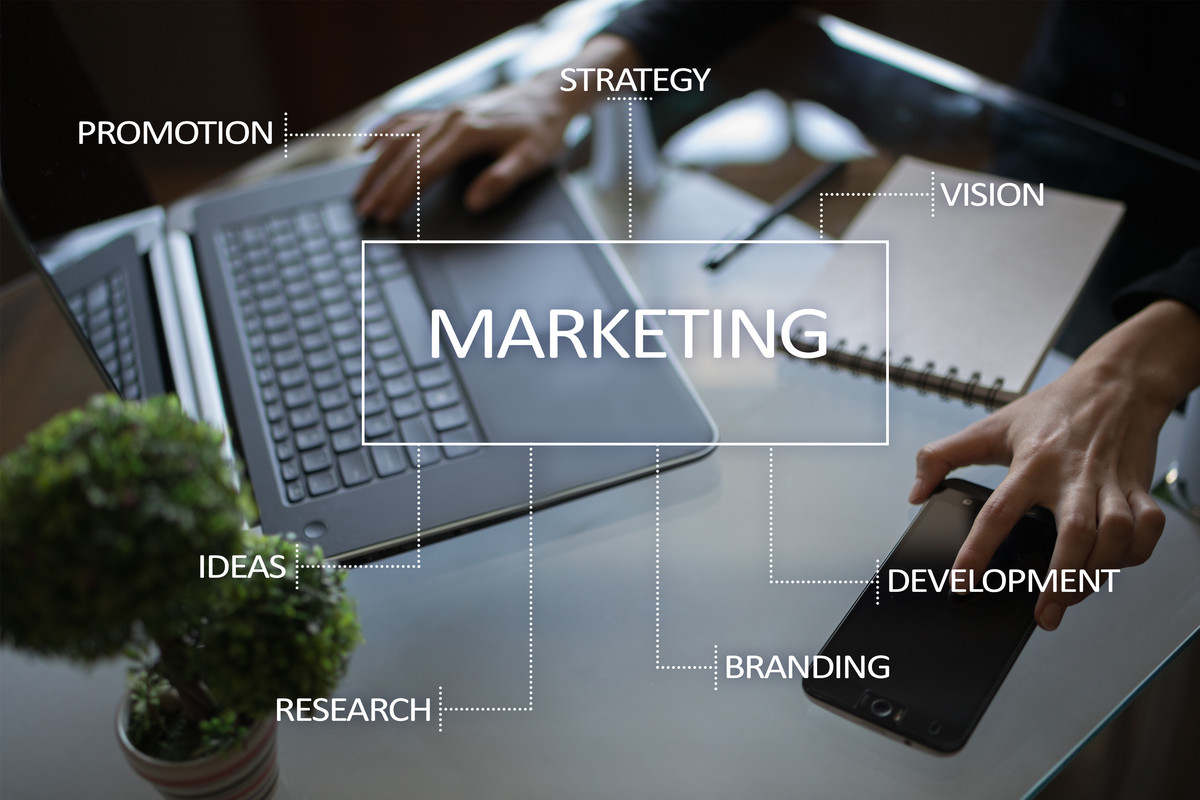Different Types of Digital Marketing
by siteadmin

There are many different types of Digital Marketing, from Pay-per-click to SEO and Inbound marketing. While each has its merits, they have different uses and can be used to drive business growth. Try these methods if you're looking for a way to boost your business revenue. You'll soon see the difference. Hopefully, this article has helped you decide which ones to use. Until next time, happy marketing!
Inbound Marketing
Inbound digital marketing is the new normal. Unlike traditional advertising, which bombards consumers with messages in hopes of making a sale, inbound marketing reaches consumers on their platforms and draws them to your brand. Data-driven inbound marketing strategies target consumers interested in your product or service. Once consumers are interested in your content, they are more likely to become customers. But how do you attract these consumers?
Firstly, you must be clear about your goals. Your goal is to create a list of qualified leads that will convert to sales. It would be best if you asked the agency for samples of their work. If the agency cannot provide this information, proceed to find another company. Ask about the agency's core values and beliefs before hiring them. Make sure they meet those goals. This way, you can make an informed decision. By establishing a good relationship with a marketing agency, you'll be able to reap the benefits of inbound digital marketing and achieve your goals.
It is also important to delight customers. When customers are happy, they're more likely to become repeat customers and advocates of your brand. Social media platforms provide an easy forum to share feedback, ask questions, and comment about a product or service. Great social media listening enables businesses to respond to customer comments and concerns. Marketing automation software like Hubspot provides context to your inbound marketing efforts. These marketing tools and methods are the backbones of successful inbound digital marketing strategies.
Inbound digital marketing is the most effective way to attract new visitors and convert them into sales and leads. It's proven more effective than traditional advertising and is much less expensive. The process of inbound digital marketing begins with strategic content and ends with the promotion of that content. This way, your content attracts interested prospects and turns them into customers. The following are just a few benefits of inbound digital marketing. If you're interested in inbound marketing, read this article!
Content Marketing
Content marketing is the process of creating content that reaches your target audience. Your goal should be to provide valuable information that people can interact with. The content should be interesting and relevant to your audience, making them want to learn more. If you're looking for content that converts visitors into customers, you've come to the right place. Listed below are some tips that will help you succeed in content marketing. Listed below are some ways to increase conversions:
A good content marketing campaign starts with a blog. Business blogs are the most popular types of content marketing today. Whether creating a blog for your website or writing for a client, it should be relevant and actionable. It can also incorporate images, animations, forms, and videos. Video content is another effective form of marketing that will attract users. Many content marketing companies use video content to attract consumers. These are some of the top tips for content marketing.
Creating content is an art form that can be very effective. It's about sharing information, stories, and experiences with the world. Ultimately, it's designed to spread knowledge. Content marketing has numerous applications and serves many purposes. Here are just a few. This type of marketing strategy is the best way to drive business results. It requires a lot of research and takes time to see results. But if you're serious about gaining more customers, it's worth it.
Inbound marketing, or content marketing, involves creating relevant content and distributing it online. It's designed to draw a targeted audience to your business by creating authority and trust. It can also increase brand recognition, build loyalty and encourage repeat business. If done right, content marketing is an excellent way to keep your business in people's minds. So what are you waiting for? Start implementing content marketing today! You won't regret it!
Developing content is crucial to the success of any marketing strategy. You must be able to measure the effectiveness of your content and revise accordingly. To ensure success, you should have a deep understanding of the industry and the expectations of your target audience. Aside from content, it should also be exciting and readable. When content is written well, it will appeal to readers and increase your website's search rankings. When done correctly, content marketing can help you increase your revenue.
SEO
Search engine optimization (SEO) is an important part of digital marketing. The algorithms used by Google determine the rankings of websites based on their relevance. Hence, SEO involves putting a website on top of the results list. SEO is a cross-disciplinary activity encompassing content, technical search engine optimization, and user experience (UX). Good SEO will be able to improve the user experience and the conversion rate of your website. Ultimately, SEO strategies will help you boost the conversion rate and ensure you get the maximum ROI from your traffic.
Search engine optimization focuses on driving high-quality traffic to your website and improving your brand awareness. SEO is a set of best practices that a website must follow to rank well in search results. The purpose of SEO is to improve the site's ranking by improving the four major areas of its design: relevance, keyword density, and website content. These factors play a role in ensuring that a website receives the highest amount of clicks possible.
Search engine optimization is essential to online business success. With the growth of the internet, most people now do their research online before purchasing a product or service. Search engines display relevant query results, and people click on the top-ranked ones. To improve your SEO, you must consider optimizing your website for local customers. For example, a company may need to create content for a specific market if their customers are in another city. Similarly, search engine optimization also affects your click-through rate, which can be crucial to the success of your business.
While PPC and SEO are crucial to your online marketing strategy, they are complementary. The two target the same result page rankings. If you implement both techniques correctly, you can expect your ROI to be higher. Search engine optimization will help you attract the right audience and increase sales. The higher the audience, the better your conversion rate. This, in turn, affects your revenue. This is a win-win situation for everyone involved. But if you are using one or the other, you must know how each one works and what it should do for your business.
Pay-Per-Click
One of the most common advertising models in the online world is pay-per-click or PPC. The concept works by requiring advertisers to pay a set amount each time someone clicks on their advertisement. As a result, pay-per-click campaigns can be very effective for generating website traffic and specific user actions. However, it is essential to understand how pay-per-click works to maximize the effectiveness of your digital marketing campaign.
Google and Bing use an auctioning system to show ads. This advertising model is used on search engines to attract traffic to websites. People can click on these ads based on keywords, phrases, and related content. As a result, people typically pay between 15 and 30 cents per click, although some profitable niches can cost up to $5 per click. Pay-per-click is a great way to generate traffic and boost profits, especially for small businesses.
Using pay-per-click in digital marketing is similar to setting a daily budget for your website. You choose a keyword and ad position. Once the ad is clicked, you pay the website publisher. The website will bill you for the amount you paid per click. This method can help you increase traffic volumes quickly. When used correctly, pay-per-click can drive significant traffic to a website.
Many advertisers use pay-per-click in digital marketing, which has become the standard in this industry. Pay-per-click can be a useful tool for businesses of any size. These campaigns can start at a very low price, sometimes even as low as $1. These extremely flexible advertising strategies allow advertisers of all sizes to control their campaign budgets. Additionally, they allow advertisers to control where their ads are shown and when they appear.
So how can you make sure your marketing campaigns are working? It's crucial to measure these metrics and make the most of them! Cost-per-click is a critical metric for digital marketing campaigns. It helps businesses calculate their return on investment. High-cost keywords usually have higher conversion rates and a higher ROI. Using cost-per-click to monitor your ads can help executives identify if they're overspending or underspending.
Categories: Digital Marketing
Tags: digital marketing, lead generation, affiliate marketing business, online marketing, affiliate marketing
There are many different types of Digital Marketing, from Pay-per-click to SEO and Inbound marketing. While each has its merits, they have different uses and can be used to drive business growth. Try these methods if you're looking for a way to boost your business revenue. You'll soon see the difference. Hopefully, this article has…
Recent Posts
- Cincinnati Concrete Contractor Pros – The Premier Concrete Contractors in Cincinnati
- Trade Pro Plumbing: Northwest Arkansas’ Trusted Plumbing Experts Now Serving Rogers and Springdale with Unmatched Service
- Transforming Spaces with Custom Concrete & Coatings: The Leading Experts in Concrete Coatings and Epoxy Flooring
- Dos Reyes PGH: Redefining Pittsburgh’s Culinary Scene with Premier Food Truck & Catering Services
- Vitality Vibes Massage KC: Kansas City’s Premier Destination for Relaxation and Rejuvenation
